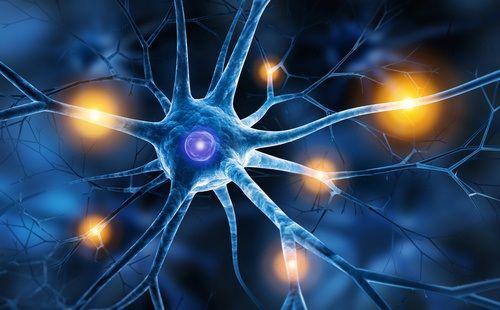Article
Cell Protein Surges in MS: Study
Author(s):
Looking at MS from a molecular level, researchers see a clue.

Scientists in Canada and the United Kingdom say they’ve they’ve identified a new therapeutic target for MS research, one that could help doctors tackle the disease at the molecular level.
Researchers from the University of Alberta, in Canada, and the University of Exeter, in the UK, wanted to find out more about the biological underpinnings of MS. They noted that existing MS therapies are powerless to stop the disease when it reaches its advanced stages.

As a starting point, the scientists focused on mitochondria, which can be dysfunctional in MS patients, and in patients with other neurological disorders. In MS patients, the mitochondrial dysfunction is especially apparent in the neurodegenerative phase of the disease and/or when MS is progressing in a patient.
“Scientists have been pointing to the mitochondria, the powerhouse of the cell, as a possible link to MS but have not been able to decipher how they malfunction,” said Thomas Simmen, PhD, (photo) an associate professor at the University of Alberta. “Ours is the first study that combines clinical and lab experiments to explain how mitochondria become defective in MS patients.”
Simmen and his associates noted that another common symptom of neurodegenerative disease is endoplasmic reticulum (ER) stress. One of the manifestations of ER stress can be dysfunctional mitochondria, in addition to other symptoms. Researchers don’t fully understand the links between ER stress and mitochondria, so the teams in Alberta and Exeter decided to zero in on the membranes that physically connect the ER and the mitochondria. Those membranes are known as the mitochondria-associated membrane, or MAM.
“Therefore, we investigated whether the guanosine triphosphatase (GTPase) Rab32, a known regulator of the MAM, mitochondrial dynamics, and apoptosis, could be associated with ER stress as well as mitochondrial dysfunction,” the authors wrote.
The answer, in short, was “yes.”
Rab32 is virtually nonexistent in healthy brain tissue, but the scientists showed that Rab32 surges in the brains of people with MS. The surge could potentially be the culprit that sends faulty signals to the cells of MS patients.
“A part of the cell that stores calcium (endoplasmic reticulum) gets too close to the part of the cell that creates energy (mitochondria) when massive amounts of Rab32 are present in the brain of MS patients,” said Simmen, in a press release. “The resulting miscommunication with the calcium supply triggers the mitochondria to misbehave, ultimately causing toxicity for brain cells in MS patients.”
The scientists posit that ER stress is tied to an increase in Rab32, which leads to mitochondrial dysfunction, which potentially leads to cell death.
Simmen and his colleagues were quick to note that it’s not yet clear what actually causes the surge of Rab32. They also note that Rab32 is likely not the only important protein when it comes to unraveling the mystery of MS.
“Rab32 is just one of the proteins that is having the effect of drawing the ER and mitochondria too close. There are dozens of other possibilities,” he said.
However, Simmen said his study clearly demonstrates that Rab32 is a prime target for additional study.
The research, titled “Rab32 connects ER stress to mitochondrial defects in multiple sclerosis” appeared in January in the Journal of Neuroinflammation. It can be read in full here.
Related Coverage:
Researchers Identify Cells That May Help Myelin Regeneration
$2.5 Billion Deal for Multiple Sclerosis Drug
New Study Adds to Case for Stem-Cell Transplants as MS Therapy




